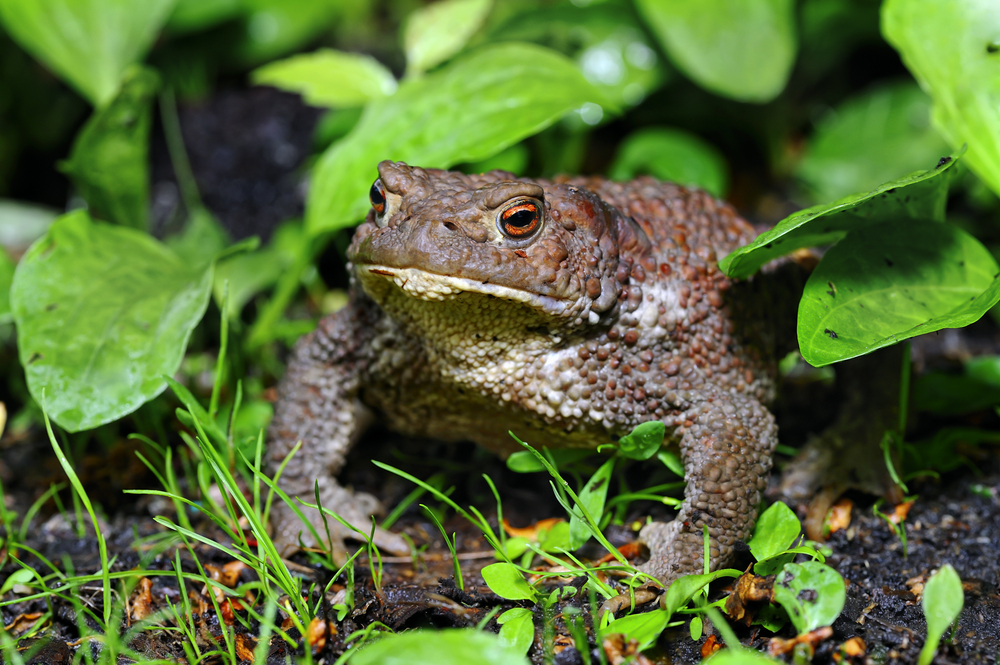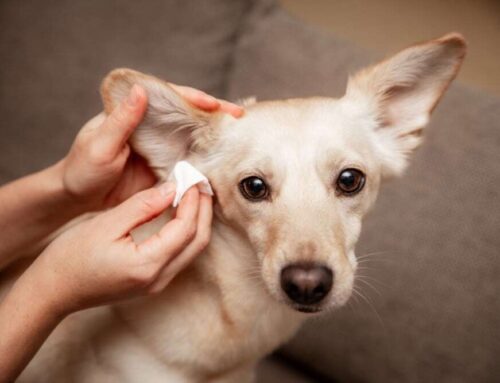Watching your playful pup paw at a quick-moving toad to get it to hop again is an adorable sight, but it may be more deadly than cute. Reports are coming in across Florida about dangerous interactions between pets and bufo toads, which are highly toxic This invasive creature is steadily increasing in number in southwest Florida, and encroaching further across the Gulf State.
What is a bufo toad?
Bufo toads go by several names—cane, giant, or marine—and they’re bad news for Florida residents with swimming pools, as they head straight to water on their migration north. They also infest canals, freshwater retention ponds, and agricultural areas. Originally, these toads were brought to Florida in the 1930s to control sugarcane pests, but most of today’s population has exploded from pet trade escapes in later decades.
Even though most toads appear somewhat similar, ensure you can recognize a cane toad to protect your family. These toads are larger than native frogs and toads, and adults measure four to six inches at adulthood, although they are known to have reached nine and a half inches. Their warty skin is tan to reddish-brown, dark brown, or grey, with dark spots along the back. They have large, triangular parotid glands located on the shoulders, while native toads have oval-shaped glands. The bufo’s glands secrete a thick white substance when they are grabbed or threatened that is highly toxic to pets and irritating to human skin and eyes. Unlike native toads, bufo toads do not have ridges or crests on the top of their heads.
According to the University of Florida’s wildlife department, be sure to identify any toad in your yard to ensure that it cannot harm your family. Sedate any cane toad you find by rubbing or spraying 20% benzocaine toothache gel or sunburn spray (not 5% lidocaine) on the toad’s lower belly. After a few minutes, the toad will be unconscious, allowing you to place it in a sealed plastic bag in the freezer. Wait 24 to 48 hours to ensure the toad is humanely euthanized before disposal.
What are the signs of bufo toad toxicity?
Bufo toad poisoning is caused by a toxin, so it can mimic other toxicities, such as those caused by chemicals, pesticides, and cleaners. If your pet has come in contact with a bufo toad, signs often begin immediately and may include:
- Profuse drooling
- Crying or other vocalization
- Pawing at the mouth
- Disorientation
- Brick-red gum color
- Increased heart rate
- Seizures
- Difficulty breathing
- Heart arrhythmias
- High temperature
- Collapse
Since many of these signs are similar to other toxicities, keep an eye out for toads. A toad sighting immediately prior to illness is key for diagnosing the correct cause of toxicity.
What should I do if my pet comes in contact with a bufo toad?
If bufo toads are hopping amok in your yard, your pet may come in contact with one. Often, this contact is oral, as your pet is likely to lick, mouth, or grab the toad. If you notice your pet mouthing a toad, immediate treatment is critical to dilute the toxin and prevent more from being absorbed through your pet’s mucous membranes. Protect your hands with gloves and rinse your pet’s mouth with running water for 10 to 15 minutes, being careful not to direct any down her throat.
After you have rinsed off lingering toxins, your pet will require emergency veterinary care. Bufo toad toxicity can kill a pet in as little as 15 minutes, especially without prompt intervention. No treatment is available for this form of toxicity, and treatment is largely supportive nursing care. Depending on your pet’s clinical signs, blood glucose, body temperature, heart rhythm and rate, blood pressure, and hydration will be monitored, and medication may be necessary to prevent seizures and correct the heartbeat. Your pet may also require oxygen therapy if she is having breathing difficulties. Supportive care is continued until all signs resolve.
How can I keep my pet safe from bufo toads?

You can take these steps to protect your family from the encroaching bufo toad threat:
- Keep a close eye on your pet while in your yard, especially during the night when toads are most active.
- Avoid leaving food or water dishes outside, where toads will hop in for food and water, depositing toxins.
- Cut your lawn regularly and keep it trimmed short.
- Clear out the undersides of shrubs.
- Remove leaf litter and branches.
If these steps don’t eliminate your toad troubles, contact us immediately if your pet runs afoul of this creature. Prompt care means the difference between life and death when it comes to bufo toad toxicity.







Leave A Comment